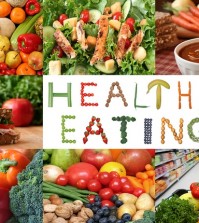- Make It Yourself Lavender Heart-Shaped Bath Bombs!
- 20 Things You Never Knew About “Down There”
- 12 Best Foods For Those Suffering From Arthritis Pain
- 12 Personal Hygiene Mistakes Almost Everyone Makes (Mom Never Told You About #4!)
- 15 Medicinal Plants And Herbs From The Cherokee People
- 12 Mind-Blowing Benefits Of Drinking Coconut Water During Pregnancy
- 12 Outstanding Winter Foods That Won’t Fatten You Up Like A Christmas Turkey
Top 15 Foods To Help Fill You Up But Not Fill You Out!

Photo credit: bigstock.com
Perhaps one of the hardest things about losing weight (or keeping a normal weight) is controlling your appetite. It’s almost impossible to ignore a growling belly when the fridge is full of food or the vending machine is right down the hall.
Our appetite is both a physical and psychological experience. Like Pavlov’s dogs, we sometimes eat simply because it’s time, because we hear a lunch truck blow its horn, or we smell something delectable.
Other times, our appetite can change because of depression, mood swings, boredom, stress, anxiety, or an unhealthy lifestyle.
Of course, the appetite can change because of certain health problems or conditions such as PMS, Grave’s disease, pregnancy, diabetes, and hyperthyroidism.
If you are looking to stay at a healthy weight or if you want to lose some weight, you need to get moderate exercise, drink plenty of water, and incorporate certain foods into your diet so that you feel full for fewer calories.
Keep reading and find out the 15 best foods that will fill you up, but not out!
1. Whey Protein
One of the two proteins that make up milk products, dairy whey, is one of the most filling types of protein around. The journal Appetite published a study which found that subjects who consumed whey protein each day ate 18 percent less overall in the two hour period afterwards than those who consumed a high carb drink. Add some whey protein powder to your smoothies to give you a powerful protein punch that won’t add more to your waistline.
2. Oatmeal
Oatmeal is a slow-digesting carb that can help to keep your blood sugar, and therefore your insulin, at more stable, optimum levels. This helps to speed up the fat-burning process. Eating oatmeal will help you feel fuller for a longer amount of time than breakfast cereals because it contains both insoluble and soluble fiber. Oatmeal also stimulates your body to make more of an appetite suppressing hormone called cholecystokinin.
Continue to Page 2
































